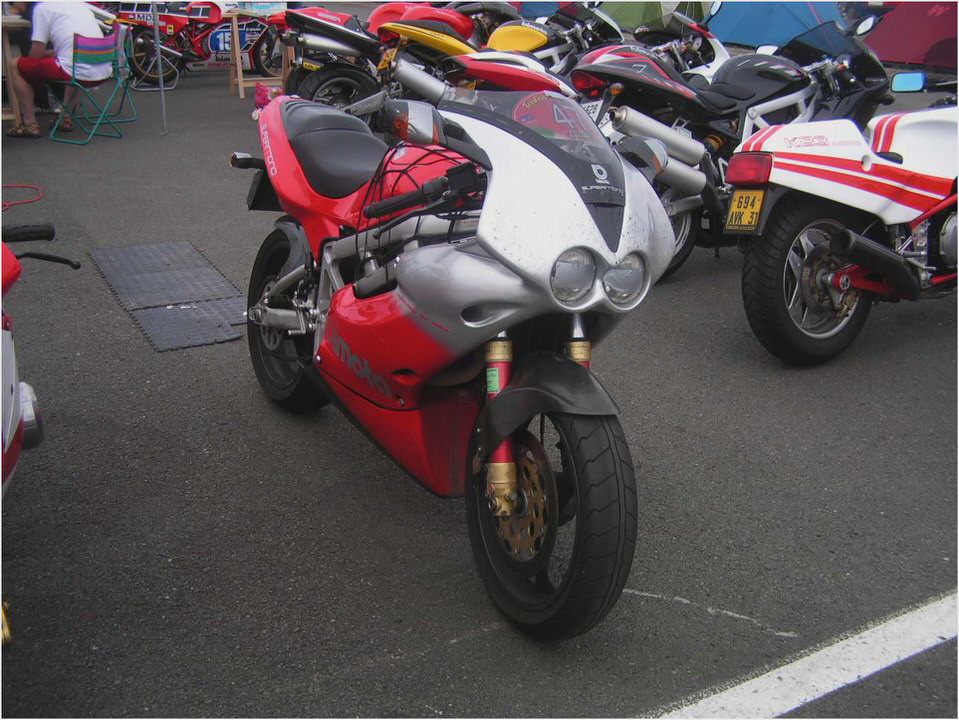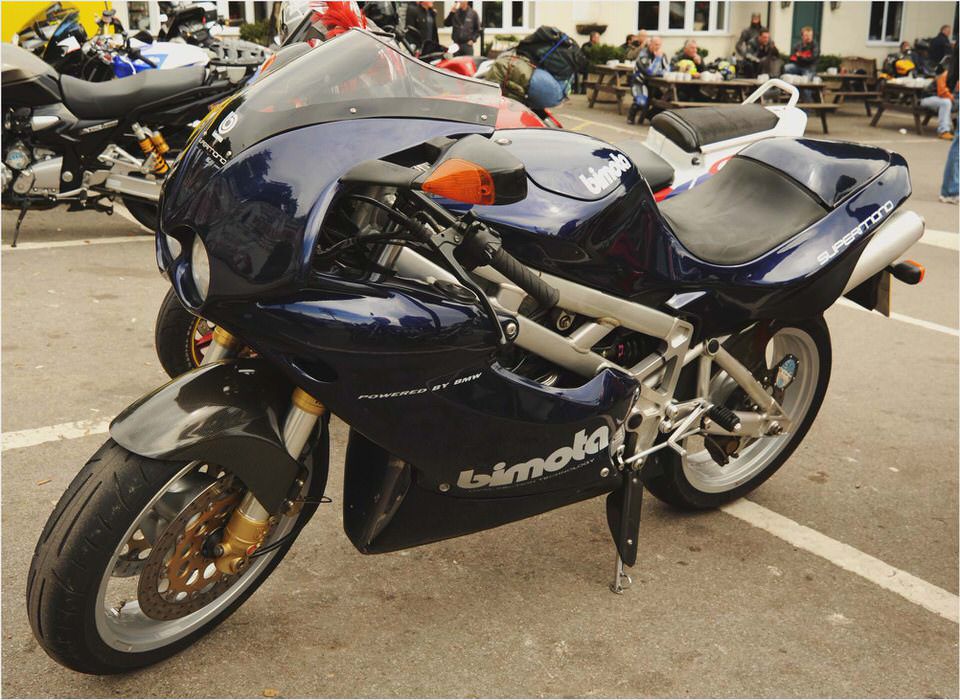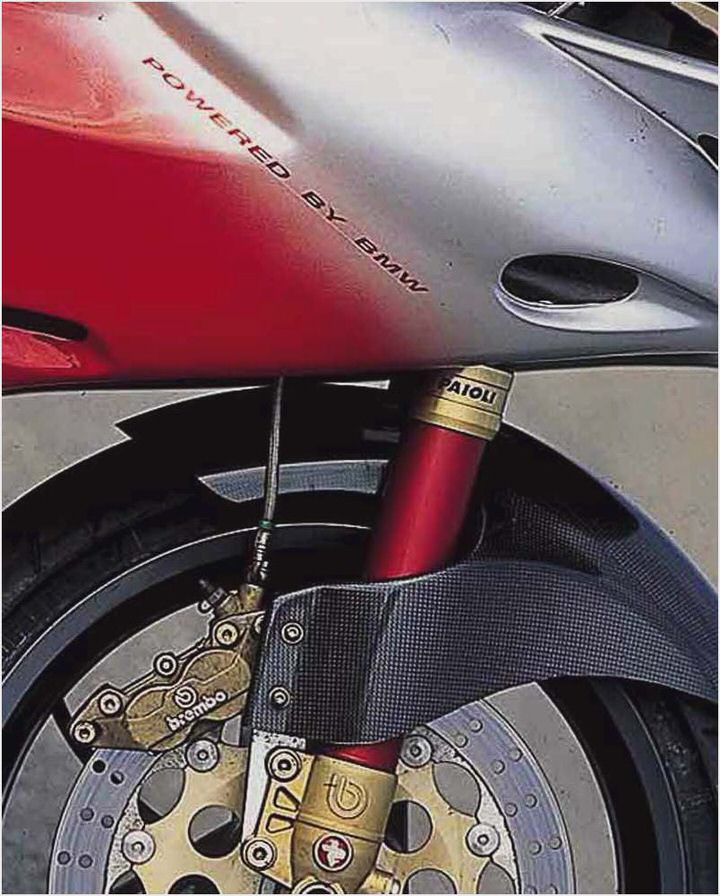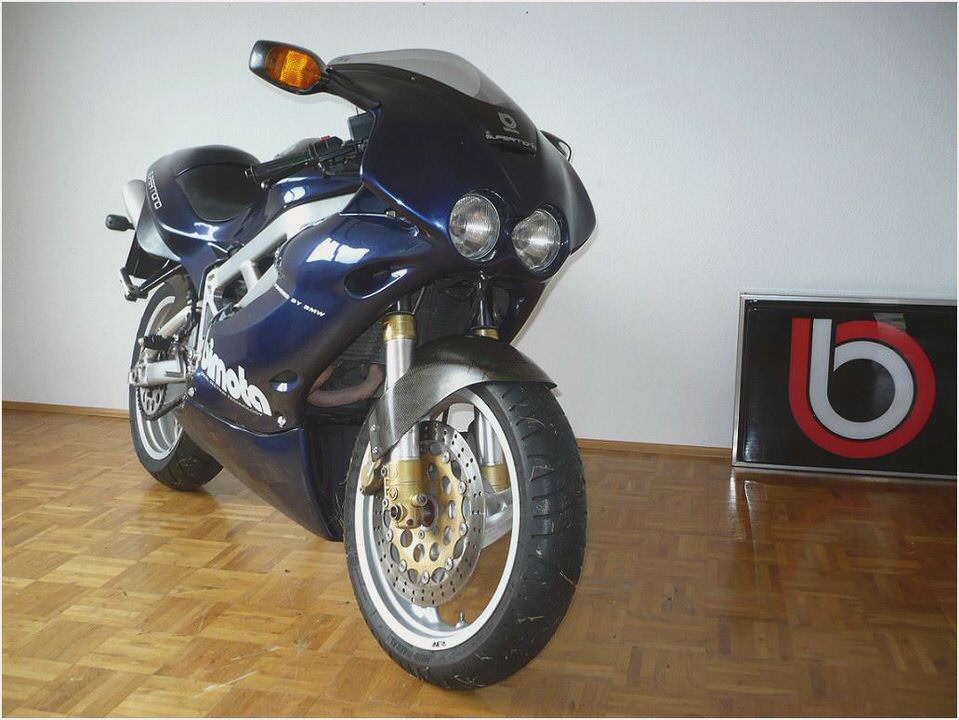
Special Sport Bikes: Part 3: Bimota V-Due
Special Sport Bikes: Part 3: Bimota V-Due
Bimota V-Due: The forbidden fruit
Last weekend, despite being under the weather, I searched through a dilapidated carton for my favorite article in Motorcyclist [or Cycle World] magazine titled – “knocking on heavens door” – the heaven alluded to here is Rimini, Italy, home of Bimota. I could not find it, but with the help of my son, launched a project to revive the last remnants of my video collection of F1 races from the 90s. I had a few hundred tapes of full races and qualifying sessions – now reduced to around 30. My next article should have an apt caption: “Now playing at Ksanjeev’s – 1994 Italian GP.”
Back to the topic – great excitement surrounded the imminent launch of V-Due at the Milan motorcycle show in late 1995. It was indeed an ambitious project on two fronts. It was not only the first bike to be powered by Bimota motor but also a platform to prove the viability of 2-strokes – and this, during a time when the two-stroke intelligentsia was beginning to disappear faster than the ozone layer.
The V-Due flaunted a direct injected 500 V-Twin, a technology that Bimota had been working on since 1990. Bimota had shown their ability to innovate with radical ideas around chassis and suspension – case in point – the success of Tesi – which continues to flourish two decades after its introduction. Would the same apply to their engine department and would the gamble pay off for a small company already in challenging financial times.
In 1996, Honda announced their intent to field privateer teams with the V-Twin brethren of their mighty NSR500 V-4. This was in the interest of filling the grid with competitive yet affordable machines. Although in today’s analogue, it would be like the CRT experiment, make no mistakes about the NSR Twin – it was NOT based on any production/superbike platform – but built from the ground-up.
HRC produced 20 odd bikes in total from 1997 to 2001 before the MotoGP class killed the glorious 2-stroke era. The NSR twin had indeed produced impressive results and showed solid potential.
So there you have it, you could buy from Bimota, a V-Twin powered 500cc 2stroke that came close to a GP machine, all for under 30,000 USD. Bimota produced a few 100 and I had chance to see one in flesh at GP motorcycles in San Diego, California. The bike was not super attractive to say the least.
It simply lacked the sex appeal of a Tesi. It did feature exquisite bracketry, Carbon fiber rear subframe and integrated mono-posto tail – fully adjustable Paoli forks and an Ohlins rear shock mated with what experts believe was a superb chassis. With around 110HP and tipping in at 300 odd pounds, it would not out gun an R1 on a long straight.
But Bimota was not after setting records on out right horse power or top speed – but rather delivering a street legal track weapon – especially one that leverages 2-stroke simplicity in Bimota skins and chassis. The engine was a work of art – too bad it was hidden under the full fairing – but it would turn out to be the least of its problems.
Come 1997, the euphoria around the debut quickly turned into a mass recall of all the bikes – and this recall actually was different – because Bimota basically bought all the bikes back. The culprit was the direct injection technology – where oil was fed separately and not mixed with the fuel as in conventional petrol EFI systems. It was be-fit with gremlins that wrecked havoc with the combustion chamber –fouling spark plugs in a few hours.
A Carburetor retrofit was offered – but it was a farce in light of the purpose of this grandiose project. It suffices to say that it did very little in saving the V-Due much less saving Bimota. The financial causality was severe enough to drive Bimota to bankruptcy – ironically the V-Due was the first and the last of Bimota powered motorcycle. I have read that all the bikes, spares and legal rights were bought out by a Bimota engineer.

Somewhat of a somber ending to what could have been a great weapon for 2-stroke craze.
I sometimes wonder why Bimota did not collaborate with Cagiva for Fuel Injection technology since Cagiva had a proven platform with their V594 racer. In fact, Cagiva commenced their work with EFI in 1988 – probably even ahead of HRC. They had experience with the Weber-Marelli systems [adapted from Ducati Suberbikes], TAG electronics, and had hired experts from F1 to get this right. Cagiva, tuned various aspects of their FI platform by running countless laps on various circuits for years.
Andrea Goggi, head of engine development for Cagiva had emphasized the need for thorough testing to get the injector position, fuel pressure and quality of spray dialed in – with a squirt for each crank shaft rotation per cylinder unlike a 4-stroke. While recognizing that the Cagiva EFI was developed with a focus on maximizing power and V-Due’s had to balance power and emissions, I still feel there was a middle ground. With the Castiglioni brothers’ decision to pull out GP racing, the last of EFI powered 2-Strokes would end-up on a pedestal at CRC.
I really wish Bimota had sorted out the direct injection technology fully before launching the bike for public even if it meant a year delay. May be this would have been the holy grail for saving the 2-stroke technology.
Today there is a very good resource pool for the V-Due. So, it could a dream project for a 2-stroke nut with liberal financial resources. I am neither, but, still cannot completely rule-out the possibility of getting one – but I simply don’t like the carbureted version since it defeats the original purpose of the project.
I have a unique candidate for my next special sport bike of choice..
Krishna
Note from Support: Please ensure the text does not contain any [FONT] and other tags when posting content created using external word processors. For more details. http://www.team-bhp.com/forum/announ. your-post.html



- Bimota Db8 World Superbike 2
- 2008 Bimota DB7 1098 Review –
- HISTORY OF THE FRONT END – PART II – BIKE ME!
- 2012 Maruti Suzuki Swift Dzire – Images, specs and review
- 2013 NFL playoffs — SB XLVIII storylines start with Manning – ESPN

